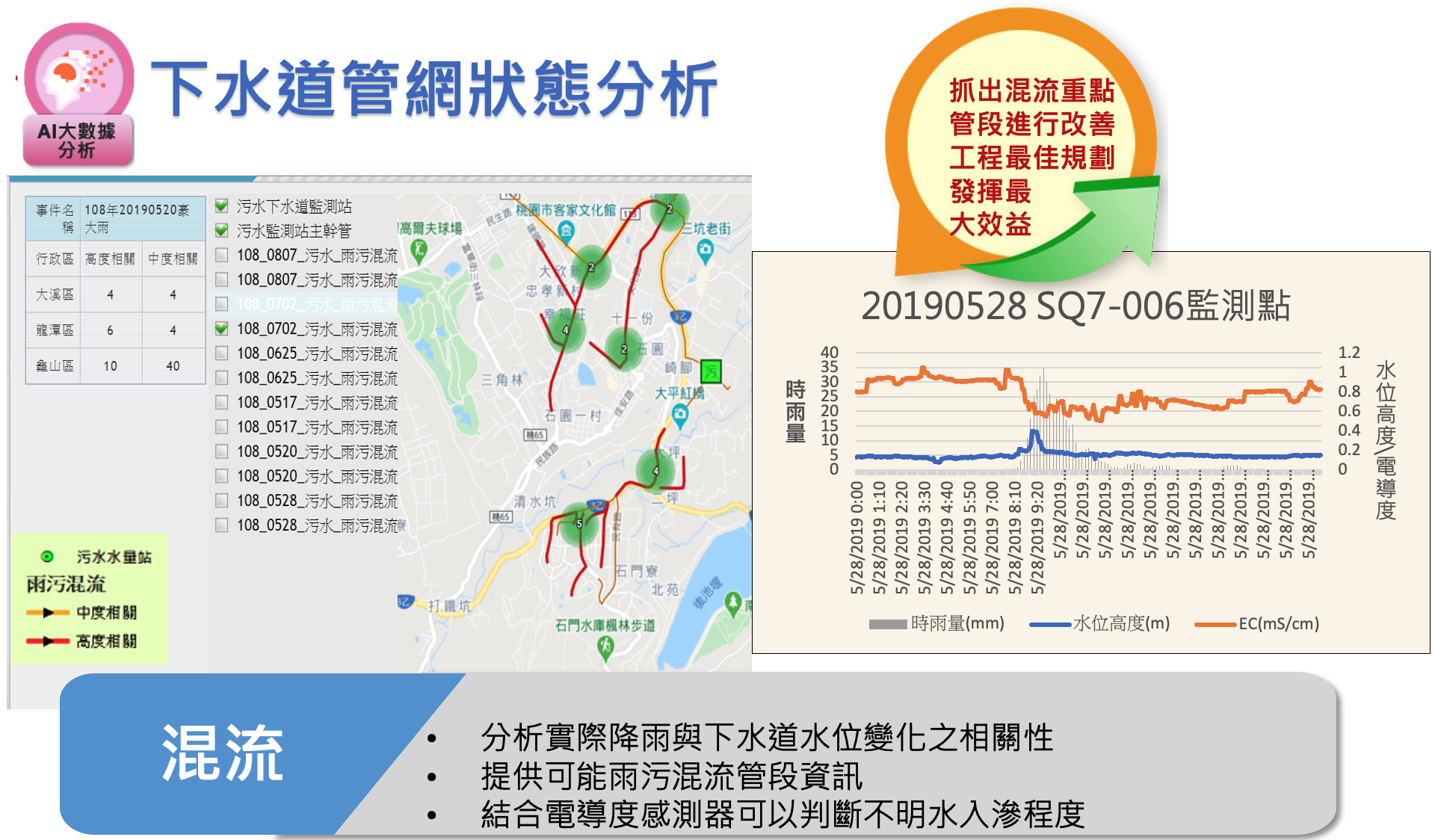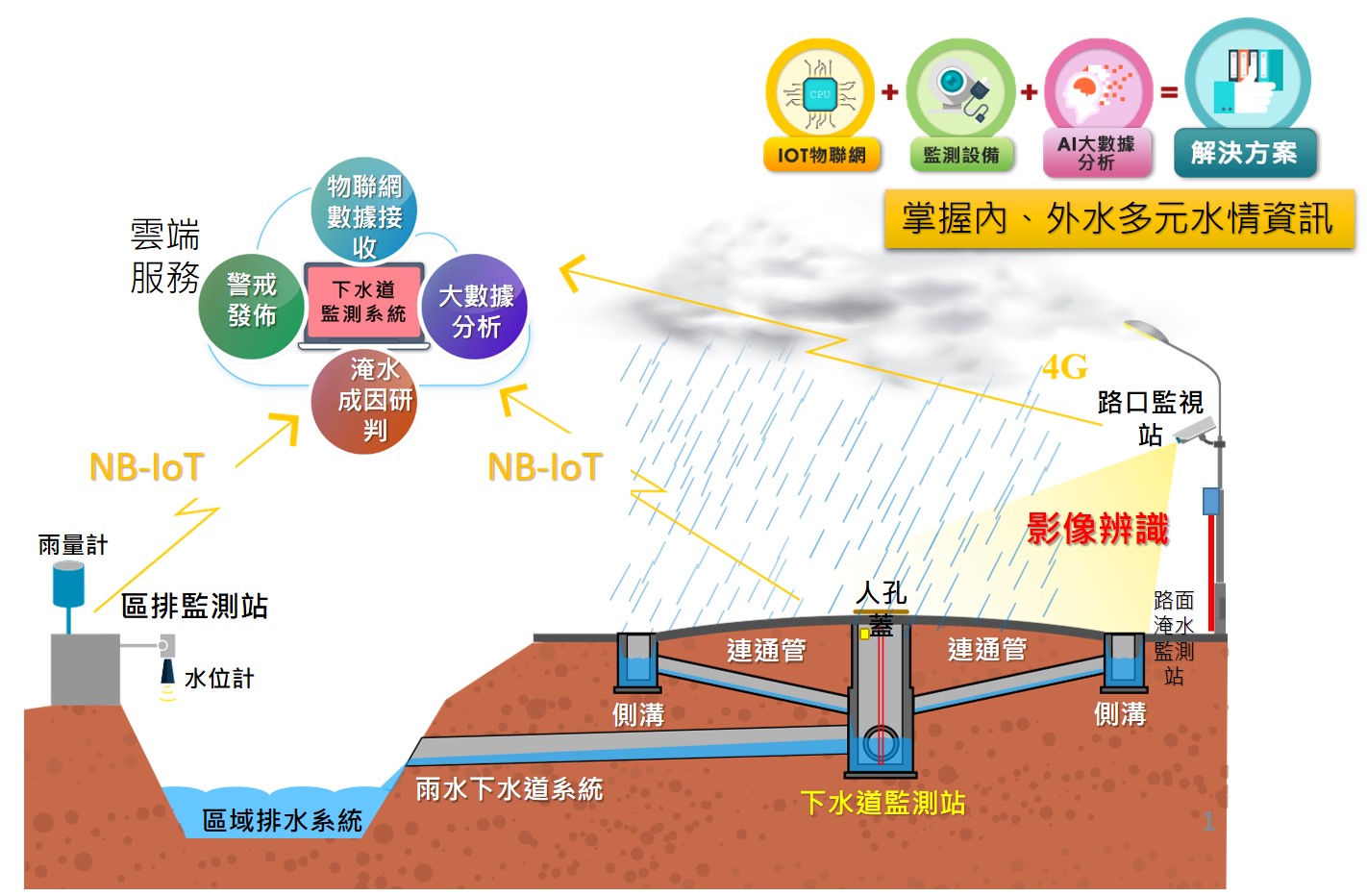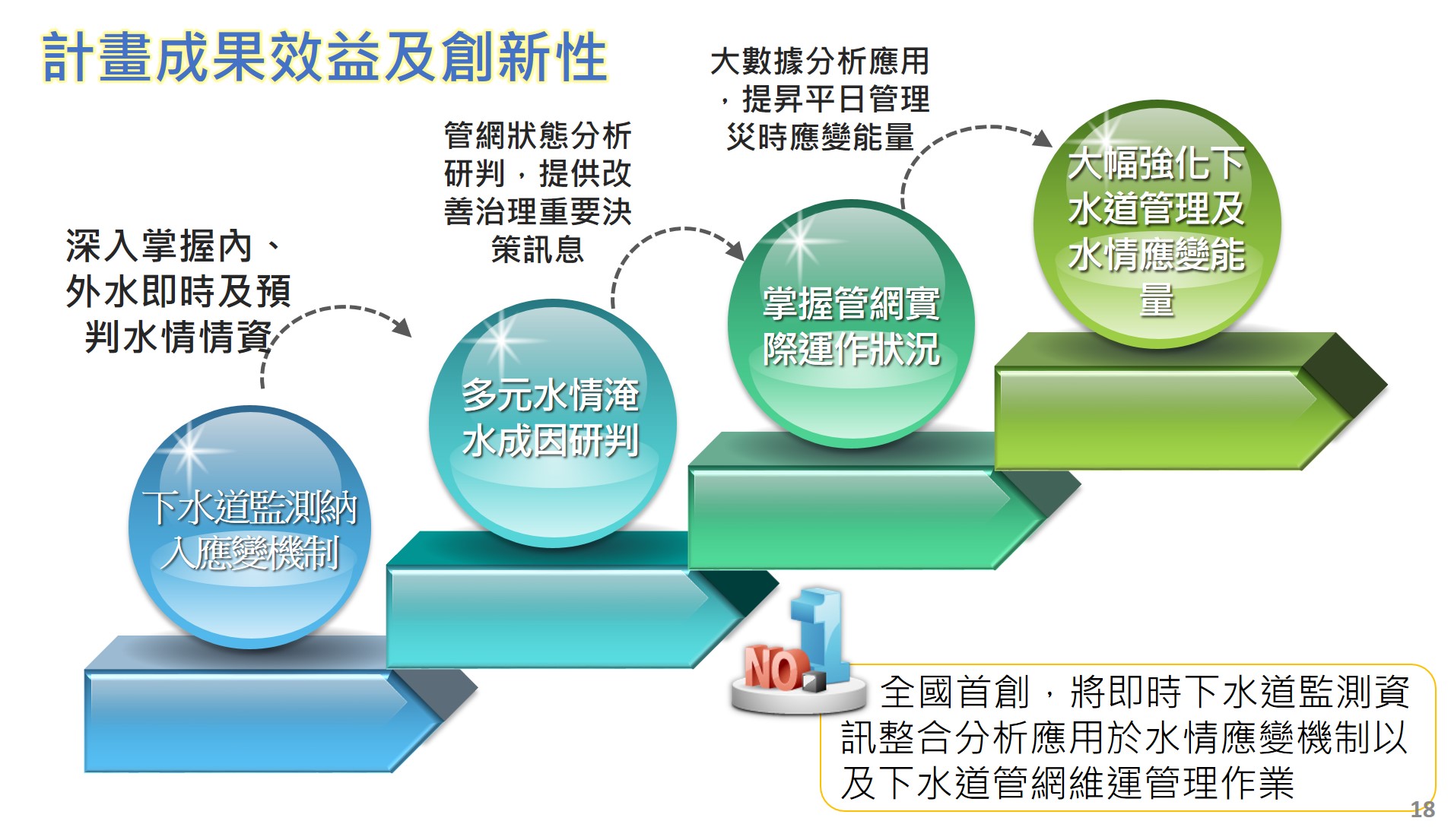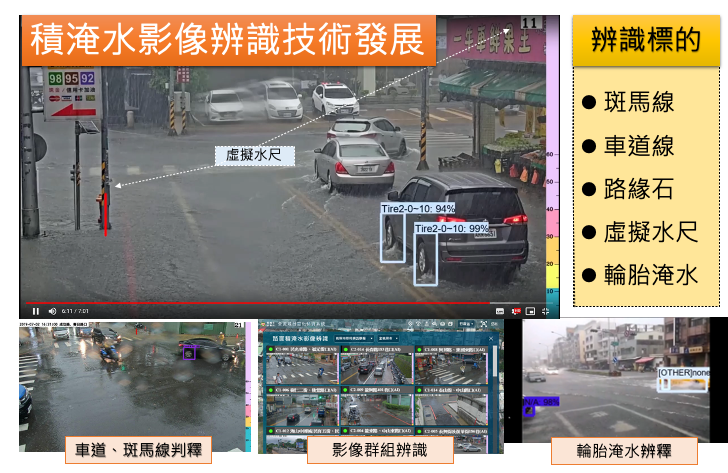Introduction
Department of Water Resources, Taoyuan combines IoT, monitoring equipment and cloud computing to develop a smart sewer monitoring system integrating into the disaster prevention and response process of the Department of Water Resources, it can provide important decision-making support information in the stages of daily preparation, pre-disaster early warning, decision-making during disaster, and post-disaster analysis.
Through big data analysis, it is applied to urban disaster prevention and sewer maintenance management. The sewer intelligent monitoring system integrates the drainage level information of the area, the monitoring information of road surface flooding and the information of the rainfall station, and analyzes the causes of flooding in multiple water regimes. In terms of maintenance and management, it includes abnormal water level and water quality notification, sedimentation notification, and pipe network status analysis.
Through the development and application of the sewer monitoring system, it is expected to reduce the labor cost of disaster prevention and maintenance management. The main purpose of the construction of Taoyuan City Sewer Smart Monitoring System is to protect the safety of people's lives and property, so that people can grasp various warning messages at the first time, further reducing and avoiding disasters, and reducing the loss of people's lives and property will bring priceless social benefits.

Project performance and benefits
Benefits of Smart Disaster Prevention and Response
The total construction length of Taoyuan City's sewer system has reached 696 kilometers. Department of Water Resources received subsidy funds from Construction and Planning Agency to develop a smart sewer monitoring system, and set up rain and sewage sewer monitoring in the densely populated key flood control areas such as Taoyuan District, Zhongli District, Guishan District, Daxi District, and Longtan District as demonstration areas 143 stations, 7 water quality monitoring stations and 30 road surface monitoring stations, in order to understand the operation status of the sewer system in real time, and through big data analysis, apply it to urban disaster prevention and maintenance management, in order to reduce maintenance and inspection labor costs.
Sewer monitoring equipment includes digital data recorder, monitoring module, communication, electric power and other equipment. In order to avoid road excavation from affecting traffic and improve construction efficiency, the aforementioned instruments and equipment are all erected in the sewer manhole, and the rapid deployment will reduce the impact to a minimum. At the very least, information is sent back through the NB-IoT communication module, which greatly reduces communication costs. The system is completed to provide the most immediate information on disaster prevention and response to the public.
Benefits of Smart Governance
The main problem faced by water affairs units is that they cannot effectively grasp the changes in internal and external water regimes, and it is difficult to quickly determine the cause of flooding without knowing the relationship between internal and external water. They can only make disaster relief decisions based on experience. After the system is established, it can comprehensively enhance the energy of internal and external water disaster prevention and response, quickly determine the cause of flooding, grasp the water situation in real time, and provide pre-disaster early warning simulation.
The main problems faced in the maintenance and operation of the pipeline network are that it is impossible to fully understand the current operation status of each pipeline network, which requires a lot of manpower and time for inspections, and it is difficult to grasp the situation of sneak discharge and mixed flow pipeline sections. After the system is established, it can monitor the sewers in real time to effectively grasp the status of the pipe network, and effectively dispatch workers to dredge to improve management efficiency.
Innovation and development benefits
This project is the first of its kind for a local government, setting up water monitoring stations in the sewer system of key areas to grasp changes in sewer water levels, and automatically import information such as nearby rainfall, district drainage levels, and road flooding to determine possible causes of flooding. Provides important reference information for decision-making support such as deployment of manpower and equipment by the response chief.
The sewer intelligent monitoring system is integrated into the existing disaster prevention and response process of the Water Affairs Bureau to provide important information on pre-disaster preparation and disaster response, which is used as a decision-making test for disaster relief resource allocation. In the future, we will continue to strive for funds to expand the deployment, establish a more dense water regime monitoring network, and build a solid foundation for regional smart flood reduction and regulation.





